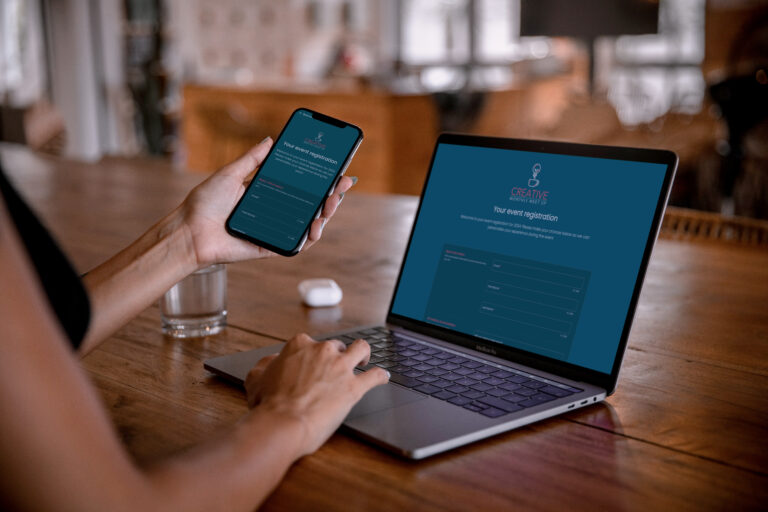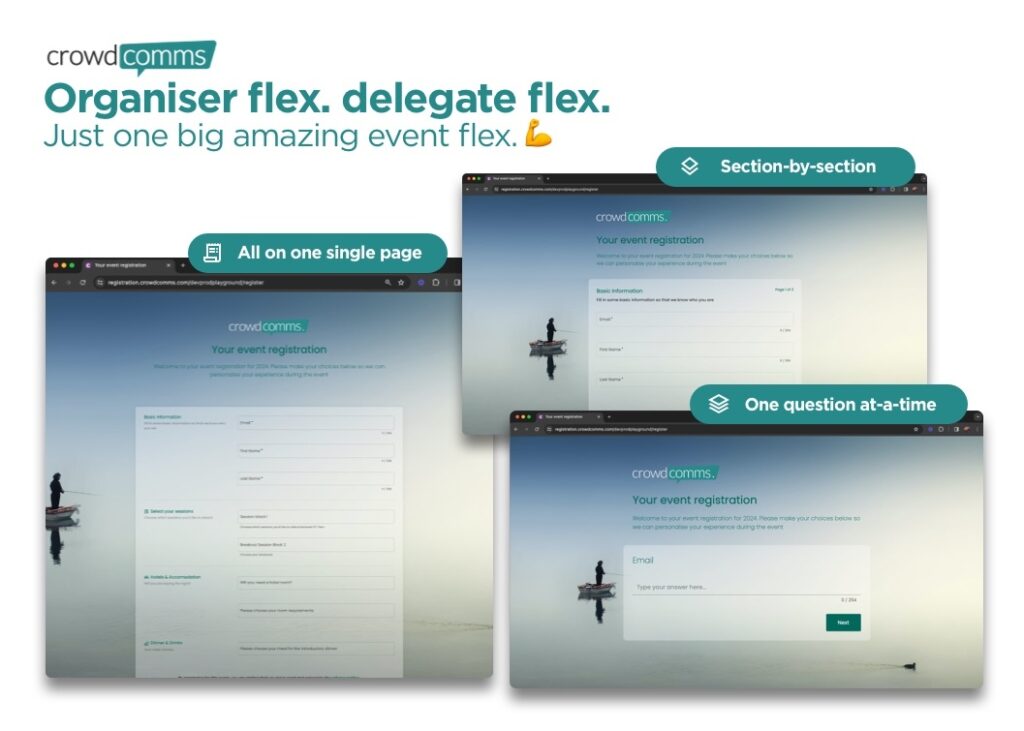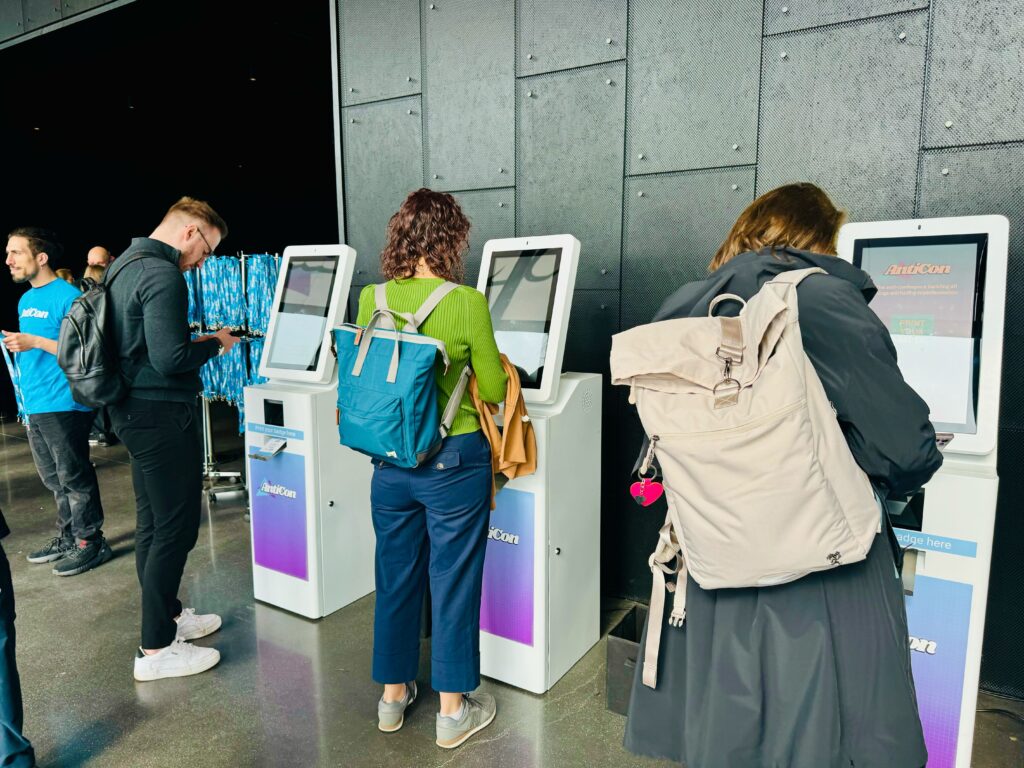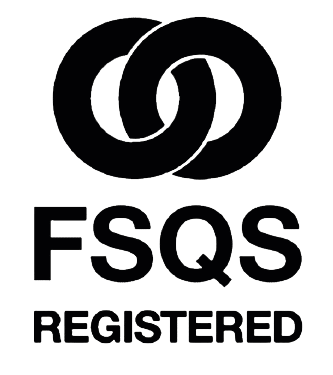
A streamlined experience not only enhances attendee satisfaction but also reduces administrative workload and prevents potential issues on the day of the event.
We have compiled seven top tips for conference and event registration to ensure your your event registration process is smooth and effective, leveraging insights from the CrowdComms team, clients and our LinkedIn community.
- Choose the Right Platform
Selecting the appropriate event registration software is the foundation of a seamless registration process. Look for a platform that offers:
- Robust features like customisable registration forms, automated emails, and payment integrations.
- User-friendly interface to make it easy for attendees to register without confusion, but also for event organisers and event planners to use with ease!
- Mobile responsiveness to ensure accessibility across devices – you want to be able to capture registrations at any point in a prospective attendee’s journey.
Example: Using CrowdComms, you can create a branded, mobile-friendly registration page that integrates with various payment systems so that attendees can easily register and pay for the event on-the-go.
Simplify the Event Registration Form
A lengthy registration form can deter potential attendees. Simplify the form by:
- Asking only for essential information initially and gathering additional details later if needed.
- Utilising auto-fill features to save time and reduce errors.
- Implementing conditional logic to show or hide fields based on previous answers.
Example: An online registration form from CrowdComms can be customised to include only necessary fields, making the process quick and easy for attendees. You can even create different registration forms for different audiences, meaning you can gather all the necessary information without overwhelming your attendees.

Flexible Event Ticket Options
Offering various ticket types and pricing options can attract a broader range of attendees, from early-bird specials to group discounts. Being flexible with ticket options within the event platform also allows for last-minute changes or additions. Your event registration platform should:
- Allow for multiple ticket types and prices.
- Offer discounts, promo codes, and group rates.
- Enabled timed release of tickets to create urgency and prevent overselling.
Example: With CrowdComms event management software, you can set up different ticket types with unique prices, promo codes and discounts all within the event registration platform. You can also schedule timed releases of tickets so that attendees are encouraged to secure their spot before they sell out.
Automate Confirmations and Reminders
Automating communication not only saves time but also keeps attendees informed. Spend some time setting them up at the beginning (or better yet, use our templates) and then set up automated:
- Confirmation emails immediately after registration.
- Reminder emails as the event date approaches.
- Update emails for any changes in the event schedule or details.
- App adoption emails, to encourage attendees to download and utilise the event app.
Example: With CrowdComms Event Registration, you can create customised email templates for various automated communication, such as confirmation emails, reminders, updates and even post-event feedback requests. These are all sent out automatically based on triggers you set up in the platform.
![]()
Attendees Manage their own Registration
Allowing attendees to manage their own event or conference registrations can improve their experience and reduce your team’s workload as they won’t need to deal with unnecessary or repetitive enquiries. Features your event registration platform should include could be:
- Self-service portals or community platforms where attendees can update their information or cancel their registration at any point. This should also be linked through to your networking app for easy event updates.
- Easy access to invoices and receipts so that attendees can keep track of their purchases..
- The option for attendees to transfer or sell their ticket if they are no longer able to attend.
Example: Using event community platforms, attendees have access to a personalised portal where they can view and manage their complete registration details. They can also easily download invoices and receipts and update their information if necessary.
Optimise the Event Check-In Process
A smooth onsite check-in process sets a positive tone for the event. Optimise check-in by:
- Using digital tools like QR codes or event apps for quick and contactless check-ins.
- Setting up multiple check-in points to avoid bottlenecks such as in busy hotels, airports or other strategic locations..
- Training staff to assist with the check-in process efficiently – ensuring they can help attendees with any issues that may arise.
Example: With CrowdComms Badge Kiosks and Mobile Event App and QR code technology, check-in is quick and seamless. Attendees can simply scan their QR code upon arrival to check-in, reducing waiting times and ensuring a smooth start to the event.

Additional Considerations
Here are some extra tips to further enhance your event registration process:
- Feedback Integration: Collect post-event feedback to continuously improve your registration process.
- Early Bird Registration: Encourage early sign-ups with discounted rates for early registrants.
- Engage with Word of Mouth Marketing Software: Allow attendees to share their registration or ticket details on social media, creating a buzz around your event.
- Track Performance: Much like you would track ticket sales, event registration platforms should offer insights and reports on the performance of your registration process. This will allow you to identify any areas that may need improvement.
Conclusion
A streamlined and efficient event registration process is crucial for a successful event.
However, every event and every audience will engage slightly differently, so above all else, it’s important to truly understand your attendees and tailor your registration process to their needs.
Use the tips and examples outlined in this guide to create a smooth, stress-free event registration experience for both you and your attendees.
Further resources for event registration tips:
- 12 tips to supercharge your event registration process by CrowdComms
How can CrowdComms assist you further in managing your event’s registration process? Get in touch with the team today to schedule a chat.
Contact us: CrowdComms




